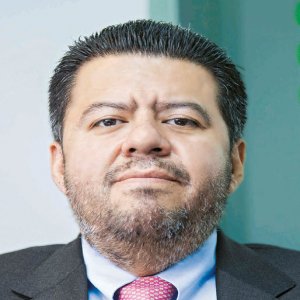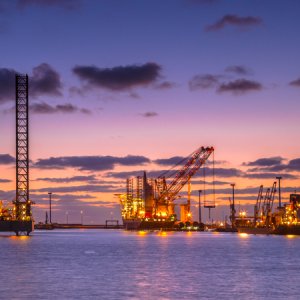A Lesson in Trust

STORY INLINE POST
Q: What went wrong in Round 1.3 and what did you learn from this experience?
A: It is of capital importance to know full well who you are going to bed with in this type of project. We made a mistake in selecting our partner, convinced that since the company was listed on the London Stock Exchange the agreements would be upheld. We decided not to proceed legally because we want to move ahead more than we want to look for trouble. We are not interested in making money in that manner.
Amex Oil was the British partner in the consortium. It asked to borrow our name to have greater impact in the Mexican market. We allowed them to use our name next to its company name, without charging the royalties or having any other gratification. The contract stated that if one partner failed to sign, that would be enough for the contract to be null and void. Given that our consortium formula placed Amex Oil as a financial partner, it had more weight and responsibility during the process because the technical partner has more impact after the signing. Amex Oil did not present the required due diligence bonds and it did not sign the contracts. But we have moved on from this incident.
Q: Your offer was significantly higher than the secondhighest bidder. What was the motivation behind this strategy?
A: If you go into the ring and get a knockout in 10 seconds or 12 rounds, the end result is the same. I do not mind that we prepared the fight for two years and only needed 10 seconds. The balance between what we offered and what these projects will contribute to our know-how, by managing about a thousand times more volume than what we initially observed, was far greater than what we anticipated. Although we played to win, covering our costs and generating some income, it was a project of significantly higher importance. We did not just see the 10km2 we bid on but the surrounding 12,000km2 area.
Q: What are your Round Two ambitions?
A: We see this differently than oil businessmen outside our value chain would view it. We consider oil fields as selling points, managed as a boutique where we can put our technologies to work and generate additional knowhow. This is why we are more interested in participating in the Round Two areas in which the exploratory components can contribute to verifying our processes. We can absorb the investment risk to acquire that knowledge. This is part of our business formula because there is no better way of scaling a process in major contractual areas than understanding in exhaustive detail if your approach and hypothesis are correct.
The other important element is to be close to regional markets that have a considerable appetite for energy and the derivatives of wet gas. Geo Estratos’ opportunity portfolio within the more than 25 total blocks in Rounds 2.2 and 2.3 is quite considerable. We are analyzing our possibilities, so much so that we are channeling investments just to determine if we are going in or not. We are exhaustively analyzing 15 blocks.
Q: What philosophy underpins Geo Estratos' activities? A: Geo Estratos’ constant is its innovative spirit. Betting on Mexico is our main objective even though we are working in other Latin American countries and in Indonesia. We want to carve our own path as an operator and learn from global companies. We have allies in Norway and Mexico that are associated with us in the oil rounds.
Our strategy is to transfer best practices to Mexico and try to emulate the most advanced countries’ technological bases. This gives us important upward potential because more developed industries have already dealt with the problems Mexico is facing. We are backed by 20 years of experience in understanding these problems so we can easily adapt successful technologies. We have pushed innovation as far as obtaining patents in processes that were deadlocked.
Q: How is shifting from being a supplier to an operator changing your business?
A: Being an operator will allow us to demonstrate that risk management in exploration and production, backed by technology, is a definitive improvement. When you involve someone else’s money and you lack certainty about the rate of return, it is difficult to sell. The only way to do so is through scaling and in such a way that tomorrow we can develop applications where we share our risk with particular users that have limited resources but are certain about ROI by working with us. We envision an industry where our success rate and economic results allow us to promote a new way of understanding risk in the oil business.
Q: What are the most important technologies in your portfolio?
A: One of our top priorities is water management. That segment represents a potentially strong market. Surface hydrocarbon management is one of our greatest challenges. PEMEX knows this because a substantial number of fields it obtained in Round Zero are experiencing declining production because of mechanical bottlenecks for water control. We are unable to discern this decrease factor because the data does not reflect it. As a result, oil fields are being closed because of the increased water or gas content. Second, we are developing technologies aimed at heavy crude oil because Mexico’s reserves are comprised of 60 to 70 percent of this type of hydrocarbon. Third, we are using technologies to position oil wells with a significantly higher success rate. This allows us to combine our subsoil expertise with our exploratory capacity and oil well positioning know-how.
Q: How can more Mexican players be encouraged to participate in the licensing rounds?
A: From our standpoint the combination of the rounds’ inherent high risk and the demanding prequalifying conditions justifies the low level of participation. There are alternative ways in which other sectors can pull together and achieve the same result, parallel to the bid. Perhaps Round 2.3 will better motivate higher participation. We are already working on it, focusing 30 percent of our assets in the Southeast Basin and 70 percent toward the Tampico-Misantla Basin.
























